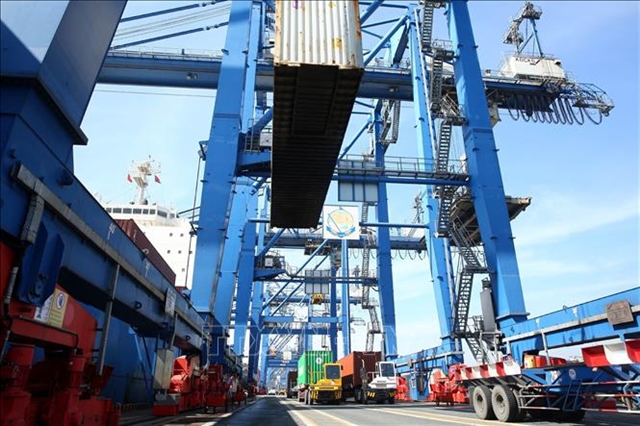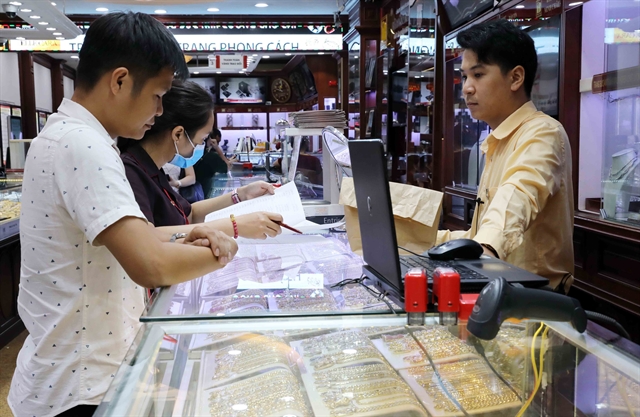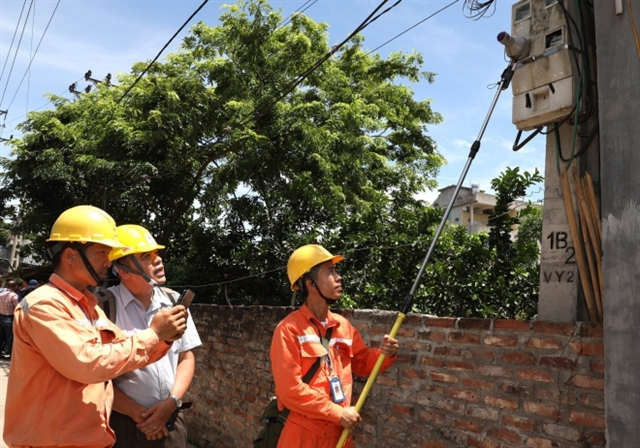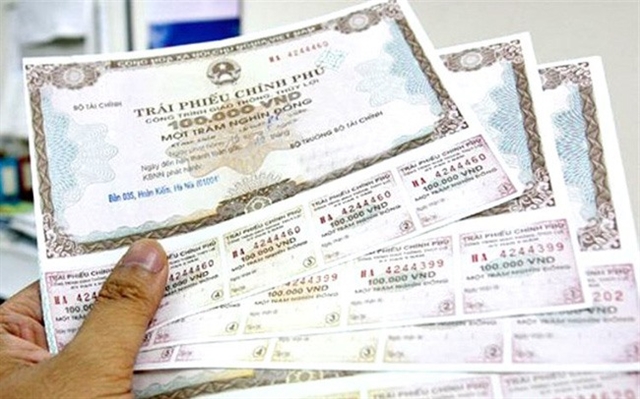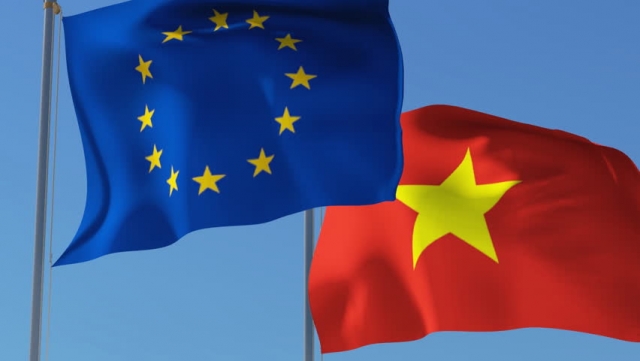
Prime Minister Nguyễn Xuân Phúc has planned to increase budget spending and public debt to support enterprises, avoiding interruption and losses of production capacity in key sectors. Võ Hữu Hiển, deputy general director of the Ministry of Finance's Department of Debt Management and External Finance, talks with Vietnam News Agency about this issue and how it affects the country’s ability to repay foreign debts and national financial security, as well as if it will reach the threshold allowed by the National Assembly at 65 per cent.
What is the current situation of public debt in Việt Nam?
Taking advantage of favourable macro-economic conditions in recent years, the Ministry of Finance (MoF) has implemented synchronous solutions to restructure the State budget, manage public debt to ensure national finance safety and sustainability in accordance with the guidelines of the Politburo, National Assembly (NA) and the Government.
Along with the achievement of strengthening the fiscal situation through cutting overspending and closely controlling the public and Government debts and tightening the provision of Government guarantees for new loans, the public debt rate (as a ratio of GDP) plummeted from 63.7 per cent in 2016 to less than 55 per cent at the end of 2019.
In comparison to the NA's permitted ceiling of 65 per cent of GDP, public debt has greatly reduced. This is the fiscal space to help the economy cope with shocks like the ongoing COVID-19 pandemic without causing macro, financial-budget instability.
For 2020, based on the growth scenario of the Ministry of Planning and Investment submitted to the Government and the NA, the MoF has proposed scenarios evaluating the impact on the State budget balance and public debt.
With the drastic implementation of executive solutions, we expect that if the GDP growth is about 4.5 per cent, the public debt ratio will be about 55.5 per cent of GDP. With a GDP growth of about 3.6 per cent, the debt ranges between 56-57 per cent.
What are the pressures on the debt payment due?
Although the debt burden has decreased, the trend of reducing public debt partly reflects slow disbursement progress of public investment capital, including ODA loans and foreign preferential loans.
This limits contribution to the economy’s growth from loans, while the budget still has to bear costs for signed and undisbursed loans. In addition, debt repayment pressure is growing.
Việt Nam has become a middle-income country, out of hunger and poverty. That is the achievement of 30 years of renewal (đổi mới). However, the challenge is that Việt Nam will no longer be entitled to preferential loans with low interest rates, but it will have to borrow commercial loans with higher interest rates, with the term significantly shortened compared to the previous time.
The Government's direct duty to pay debt was 18.5 per cent of the State budget’s revenue in 2019, much higher than the rate of 15.8 per cent at the end of 2016.
For the 2021-25 period, the NA has not yet considered and approved the ceiling level for the Government's debt repayment targets, however, the demand for capital mobilisation to offset the State budget overspending is rising.
In the face of the COVID-19 pandemic, the Prime Minister has just announced a policy to increase the public debt ratio by 2-3 per cent to stimulate the economy. How will this policy affect the ability to repay foreign debts and national financial security?
According to the 2017 Law on Public Debt Management, the Government is allowed to borrow capital to offset the budget overspending for development investment, not for regular expenditures. The adjustment of socio-economic targets and State budget overspending in 2020 belongs to the NA.
If the NA approves the overspending rate increase, the Government will be in charge of mobilising additional loans to ensure the budget balance.
According to the MoF’s plan of borrowing and repaying public debt in 2020 submitted to the Prime Minister, the Government plans to borrow VNĐ501 trillion (US$21.6 billion) this year, including VNĐ394 trillion from domestic resources and VNĐ107 trillion from foreign ones.
In case of increasing the loan by 2-3 per cent (equal to VNĐ180 trillion - VNĐ240 trillion), according to our calculations, the ratio of public and Government debt is still within the limit allowed by the NA. However, it will also be a big challenge.
The disbursement of public investment capital, including ODA loans and foreign preferential loans from the beginning of the year until now is very slow, the implementation of 100 per cent capital plan assigned by the NA and the Government requires great efforts. Currently, there are over $10 billion of ODA and foreign preferential loans, which have been signed and need to be disbursed instantly according to commitments with donors.
The mobilisation of foreign loans for new programmes requires a long preparation time, which can be up to two or three years, because many procedures need to be implemented before negotiations, signing and disbursement is complete.
The domestic G-bond market’s ability to absorb capital is limited. The issuance of large volumes of G-bonds will lead to the risk of crowding out the private sector as well as putting pressure on raising interest rates for the whole economy.
The mobilisation of new loans, including COVID-19 grants, needs to be carefully appraised and selected for efficiency, making cost-benefit comparisons to ensure ability to pay debts in the medium and long term before deciding to borrow.
It is necessary to mobilise capital from domestic financial reserve funds and may also consider a plan to issue G-bonds on the international capital market. At the same time, it is needed to diversify other resources such as taking advantage of aid and foreign direct investment to reduce pressure on public debt.
How can we raise the debt ceiling?
The ceiling of public debt allowed by the NA during 2016-20 is 65 per cent of GDP, so the NA will decide and adjust the debt ceiling increase.
By the end of 2019, public debt was about 54.8 per cent of GDP. For 2020, the State budget revenue is negatively affected by the pandemic, so the public debt may increase to 56-57 per cent – there is still room before having to consider raising the debt ceiling.
In the context of global and domestic challenges, a bright spot since the beginning of the year is that the national credit rating of Việt Nam continued to be maintained by rating agencies.
Meanwhile, in the first half of this year, 39 countries have been downgraded in prestige, 57 countries are degraded in prospects and seven countries are being considered for downgrade. This ranking reduction is mainly due to fiscal packages preventing the pandemic, which led to a sharp increase in public debt burden in these countries.
In 2021, the NA will consider and approve public debt safety indicators in the 2021-25 period.
The Politburo's guiding viewpoint in Resolution 07-NQ/TW is to restructure the State budget, while ensuring the efficiency and sustainability of public debt management – only spending in the economy’s capacity and only borrowing within its ability to repay debts. We will gradually reduce the public debt ratio by 2030 to not exceed 60 per cent of GDP, turning to reduce the budget overspending and public debt rate, and balance budget revenues and expenditures.
Thus, the calculation and proposal of public debt ceiling to be submitted to the NA for approval will be carefully considered, ensuring the goal of maintaining national financial security and debt sustainability.
In addition, it will be suitable with the market’s capital borrowing ability to meet development investment needs as well as the budget’s ability to repay debts, not affecting the national credit rating and the image of Việt Nam in the international arena. – VNS


